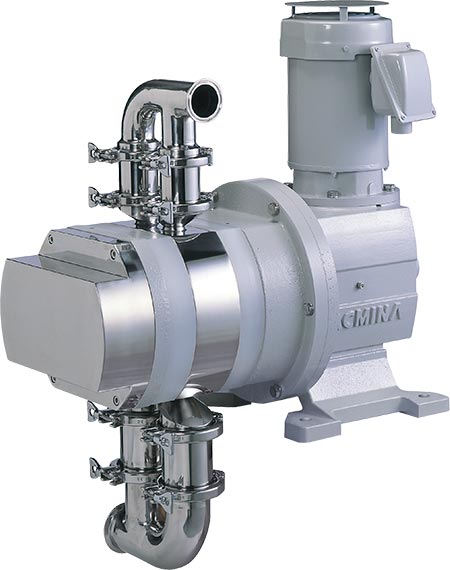
There are many viscous, sticky, gooey and otherwise difficult-to-handle ingredients used in the brewing process, and honey can be one of the most difficult.
A new and growing Midwestern microbrewery uses honey as the brewing sugar source for several of its specialty and seasonal beer recipes. Due to the varied usage requirements, there was no dedicated feeding process for getting honey from the floor into the brew vats. When a batch called for it, an employee would use a honey auger to fill a bucket, climb to the access port on the vat, and dump it in, repeating the process until the necessary amount had been added. The process was laborious, messy and inefficient, and while there were no sanitary issues with manually adding the honey at that stage, it was unpleasant work that tied up employee time, hauling honey buckets around the brewery floor, as dosing quantities were measured in numbers of 55 gallon drums.
Various pumping solutions were considered, but they failed to address the pumping of highly viscous (~10,000 centipoise [cP] at 70 F) fluid to an elevation of 10 feet at sufficient flow, the ability to deal with dry running for a time if a drum was emptied and not immediately changed, and the difficulty of cleaning the pumps.
Key Issues
The brewery was not able to afford an automated solution, so the pump had to be able to be left unattended for various periods, even if the honey supply ran out. The brewery also did not want to further increase maintenance duties with a pump that would have to be disassembled and rebuilt for full cleaning.
Solution
With decades of experience in working with moving highly viscous liquids in a sanitary environment, an OEM recommended a sanitary pump for the brewery’s needs. The brewery needed a pump that could run dry indefinitely, was clean-in-place (CIP) ready, had a low number of consumable parts, had a long working life and was easy to access, resulting in minimum maintenance time.
Workers only had to tend to the pump to change feed hose from the empty drum to a fresh supply. The recommended sanitary pump can be used for a range of ingredients used in brewing such as fruit pulps, flavorings, syrups and any material that is high viscosity or delicate to handle.
The sanitary tri-clamp configuration makes a cart-mounted pump easy to set up and relocate as needed on the brewery floor. CIP-ready enables the entire pump to be cleaned with a standard hot water flush.

No packing, seals or sliding metal parts means the pump can dry run indefinitely without worry of damage. This also eliminated any concerns about potential contamination to the vats as moving parts experience wear.
During tests at the brewery, the sanitary pump was able to push more than two gallons per minute of consistent honey flow even at cool ambient temperatures. Workers who had previously spent a significant portion of their working time emptying drums one bucket at a time were able to focus their attention elsewhere, only needing to return to the pump to change the feed hose to a fresh drum when the previous one was emptied.
Ingredient usage and process efficiency were improved, and cleanup was also simple, as a hot water flush followed by sanitizer solution circulation left the equipment clean and ready for the next task.

